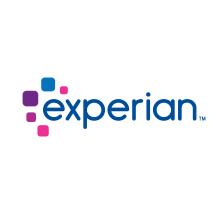How Experian Built a Disruptive Data Business
When Eric Haller graduated with a degree in finance from San Diego State University in 1990, he didn’t have a clear idea of what he wanted to do. If he was on the east coast, he probably would have gone to work at an investment bank, but he ended up taking a job as a statistical analyst at Visa in Foster City, little more than a day’s drive away.
He would later say that it was a case of being in the right place at the right time. The credit card industry was at the beginning of a major transformation, moving from voice clearing and paper transactions to electronic commerce. New database solutions, like SAS and Oracle, made it possible to analyze transactions like never before.
Before long, Haller’s position as a statistical analyst took on great importance and he quickly moved up the ranks. Still, he saw that there was something bigger going on—an emerging marketplace for data. It was around that time that he heard of a company that not only shared his vision but was creating a business that was destined to be at the center of it.
The Rise of Credit in America
As Robert Gordon explains in The Rise and Fall of American Growth, the turn of the 20th century was a time of great change. New innovations like electricity, indoor plumbing and the automobile were changing the way people lived, worked and shopped. New supermarkets and department stores were edging out the old corner markets and dry goods dealers.
While this created great opportunities, it also created problems. Merchants who needed to extend credit no longer knew their customers personally and so there was a great need to verify consumers’ trustworthiness. By the 1960’s there were thousands of credit agencies, most of which were small and local.
In 1968, a new player entered the industry, TRW, a technologically sophisticated conglomerate, which helped develop the first ICBM missiles, among other things. At the time, the credit checking process was still done manually—retailers would call and a clerk would read the credit report over the phone—but one of TRW’s founders, Simon Ramo, saw a great opportunity to automate the process.
By the time Haller joined Visa, TRW had become a major player in credit reporting and he saw the potential to fuse the new digital technologies that were beginning to emerge with large scale credit reporting. As it happened, someone 5,000 miles away had exactly the same idea.
Meanwhile, Across The Pond…
It would have been impossible to predict what would become of John Peace when he took a job at Great Universal Stores (GUS), one of the UK’s largest retailers, in 1969. As a young computer programmer, it was his job to help integrate the company’s large database of customers with other sources, such as court judgments and elections data, but like Eric Haller he turned out to be in the right place at the right time.
Peace’s work put him at the center of new efforts to create a credit score to evaluate risk, rather than just a list of various transactions and other data. With its large customer database, GUS was perfectly positioned to take a leading role. In 1980, the company created Commercial Credit Nottingham (CCN) to commercialize its activities. John Peace was chosen to lead the day-to-day management of the company.
In time, Peace proved to be a visionary leader, pioneering a number of important innovations, like offering clients dial-up terminals to connect directly to the database. He also pushed the company beyond retail and into providing credit reports to financial service companies for their loan applicants. He also hired teams of statisticians to come up with better scores and new products.
By the 1990’s, CCN had become a dominant player in the UK, but Peace had his sights set higher. He saw even greater potential in becoming a global brand. In 1996, CCN bought TRW’s credit division and the combined company was renamed Experian. It was around that time that his path would finally cross with a young statistician at Visa named Eric Haller.
The Flywheel Effect
As it turned out, Haller’s idea about a global marketplace for data had occurred to Peace more than a decade before, when CCN created a new type of database called Credit Account Information Sharing (CAIS). What made CAIS different was that to get access to the database, clients would have to submit their own data.
This created a flywheel effect, because the more data the company had, the more valuable its credit scores became and the more clients it could attract, giving it access to even more data still. Before long, it became clear that the same effect could apply to other industries as well. That was the epiphany that struck Haller when he was working at Visa.
Sensing opportunity, he sent a letter to CCN and got an interview with Peace, who was immediately impressed. Haller, still in his 20’s, was hired and made Vice President of Strategic Development charged with finding new opportunities to apply the flywheel model to the combined company.
He got to work expanding the credit business, but also entered new industries like marketing and insurance, where data could be used to create a strategic advantage for customers and make for a defensible business for Experian.
Innovating with Data
Over the next 15 years, Experian grew into a data giant, expanding from its base in credit and marketing to serve industries as far flung as healthcare, auto, and utilities, still Haller saw a new area of growth.
Historically, Experian had mostly focused on reporting data, such as credit card histories, but Haller saw the opportunity to look at relationships between data.
In 2011, he got board approval to start a data lab to suss out new opportunities. For instance, when Medicare changed its policies to penalize hospitals for readmittance, Experian went to work and found that patients with weak support networks of family and friends were at greater risk of returning for more care. Armed with that knowledge, hospitals can design interventions for high-risk patients.
Another focus has been to create data for underserved markets, like new businesses without extensive credit histories. Haller’s data scientists have been building models that analyze data from social media, including comments on review sites, along with geographic and industry factors to assess credit risk and give worthy firms access to financing.
Other initiatives are designed to increase convenience and reduce hassle. In the works are data models that will allow people to get pre-qualified for a mortgage or a car loan on their mobile phone and more intelligent fraud analysis that will reduce the chance of your credit card getting blocked while you’re on vacation or traveling for business.
Toward a Frictionless Economy
When I first arrived in Poland in 1997, the country lacked just about everything. Infrastructure, modern retail and office space, not to mention a convenient place to eat where I wouldn’t get food poisoning, were nearly totally absent. Yet as I spent more time there, I noticed some of the most important deficiencies were the ones lay under the surface.
Poland had never developed a credible system of credit scoring, which made financing all but unavailable to most people. To buy a car or a house, ordinary Poles would have to scrimp and save for years in order to come up with the full purchase price. It caused an enormous amount of friction in the economy that substantially reduced the standard of living.
In the West, as well as in Poland today, those obvious points of friction have long been a thing of the past, but others still remain. For example, many government programs fail because the intended recipients do not know that they are eligible for benefits. Also, while the Internet has created great new opportunities for commerce, it also often exacerbates information asymmetries.
Haller sees his company’s mission as identifying and eliminating these points of friction by using cutting edge analytical techniques to derive meaning from the relationships between data. By doing so, he hopes that he can help firms and consumers make better decisions about what to buy, how much to produce and how to spot trouble before it happens.
We’ve come a long way since Haller took that first job at Visa in the mid-1990’s. We no longer have to wait while the clerk at a store calls to check whether we’ve exceeded our limit, but have nearly instant access to credit and can purchase nearly anything we want from anywhere we want.
Still, there are many areas of our lives, such as healthcare, energy and pretty much any time we have to deal with a government or corporate bureaucracy, where we are still flying blind. That leads to no small amount of frustration, not to mention an enormous waste of time and other resources. Experian sees an enormous business opportunity in changing all that.
image credit: experian.com; wikipedia.com
Wait! Before you go…
Choose how you want the latest innovation content delivered to you:
- Daily — RSS Feed — Email — Twitter — Facebook — Linkedin Today
- Weekly — Email Newsletter — Free Magazine — Linkedin Group
 Greg Satell is a popular speaker and consultant. His first book, Mapping Innovation: A Playbook for Navigating a Disruptive Age, is coming out in 2017. Follow his blog at Digital Tonto or on Twitter @Digital Tonto.
Greg Satell is a popular speaker and consultant. His first book, Mapping Innovation: A Playbook for Navigating a Disruptive Age, is coming out in 2017. Follow his blog at Digital Tonto or on Twitter @Digital Tonto.
NEVER MISS ANOTHER NEWSLETTER!
LATEST BLOGS
Three things you didn’t know about credit cards
Photo by Ales Nesetril on Unsplash Many of us use credit cards regularly. From using them for everyday purchases to…
Read MoreFive CV skills of a business-minded individual
Photo by Scott Graham on Unsplash The skills listed on a CV help employers quickly understand your suitability for a…
Read More



